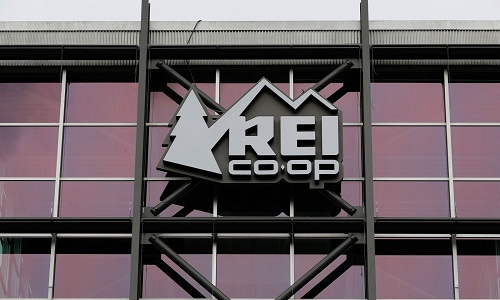FW
Nike has appointed Noel Kinder as its new VP-chief sustainability officer (CSO). Employed with the company for the past 19 years, Kinder was most recently Vice President, Sustainable Manufacturing and Sourcing. Prior to this, he was General Manager, Nike Vietnam, LLC where he was responsible for all manufacturing operations. He has held a wide range of leadership positions in the company’s footwear and apparel divisions, as well as roles in strategic planning and finance. Prior to his roles at Nike, Kinder also served in the Peace Corps, spending two years in Honduras.
Kinder will report to Eric Sprunk, Nike’s Chief Operating Officer and Tom Clarke, President of Advanced Innovation, with oversight from the Corporate Responsibility, Sustainability & Governance Committee of the Nike Inc. board of directors. He will succeed Hannah Jones, a 20-year Nike veteran as CSO, who after 14 years in the role will become President of Nike Valiant Labs, the company’s in-house new business model incubator.
Amsterdam-based fair Modefabriek’s summer edition will be restructured to cater to its outdoors theme. Topics such as “The Future of Retail,” transparency or Instagram social selling, this season’s MFTalk’s will also focus on the ongoing blending of the outdoor world with fashion.
The B2B exhibition will be held at the RAI Exhibition and Convention Centre in Amsterdam, from July 8-9, 2018. Visitors will experience brand presentations, expos, stores, fashion shows, attend workshops and receive professional advice from experts in the fields of e-commerce, online marketing or social media within the four halls.
Besides Modefabriek’s curated store by HTNK, the future experience store Screenshop will run under the theme “Oversized.” Divided into the thematic areas Funk Forest, Modern Romantics, Tech and Neo Art, the store will showcase brands like Iris van Herpen, Donkey Land and Liesbeth Sterke. Amongst the participating labels at the West Hall’s fashion district Colourshopping will be Le Cafe Noir Studio and Bloomon.
This summer’s menswear platform ‘Dress Like a Man’ will focus on skirts for men and offer live customising by man-skirt minded tailors. In addition, fair participants can watch new ways of 3D presentation and shop window solutions at an expo designed by fashion consultant Carlo Wijnands.
India’s textile industry, which had been languishing for the last few years following demonetization, GST, rupee appreciation and high cotton prices, is finally showing signs of revival. The gross NPA ratio rose from 19.4 per cent to 22.8 per cent during September 2017 to March 2018 whereas the stressed advances ratio increased from 23.9 per cent to 24.8 per cent.
The support extended to the textile sector including the Rs 1,300 crore Samarth scheme for skilling, the Rs 6000 crore package for apparel and made-ups along with various state incentives, is expected to create a strong turnaround in the textile sector and put the industry back on the growth path.
However, excess imports remain a problem. In fiscal 2018, imports of textiles and apparel were 16 per cent higher than the previous year’s value. All categories across the value chain have seen a drastic rise in imports. Fabrics and apparel imports have seen a rise of 27 per cent and 30 per cent respectively. Also, embedded duties, which are in the range of four per cent to six per cent across the value chain are not getting refunded.
The biggest game changer that could transform the industry and put it at par with its competitors such as Vietnam and Bangladesh is free trade agreements with the EU, Australia, Canada and Britain for made-ups and garments.
As per Eastern India Garment Manufacturers & Exporters Federation, GST is leading to mergers and acquisition in the organised sector, while there is a distinct move towards consolidation and transparent trade practices in the unorganised sector. Introduction of the tax has brought about structural changes in the sector. Many smaller units that were previously unorganised or semi-organised in nature are becoming organised players. Some unorganised players are also becoming suppliers or third party manufacturers for the organised units.
India has around 4,000,000-odd garment manufacturing units; of which 300,000 are located in West Bengal and the eastern region. Apart from West Bengal, the other major garment manufacturing clusters are located in Tamil Nadu, Karnataka, Delhi-NCR, Punjab, and Gujarat among others.
The federation expects garment exports from West Bengal to double, from the present Rs 1,500 crore, over the next five years. A host of policy measures like improvement in infrastructure, integrated manufacturing facilities and modern training centres are some of the reasons leading to this rise.
Egypt’s cotton exports are expected to increase nearly 37 per cent from last year. Next year exports are expected to rise by 40 per cent to 45 per cent. Output fell drastically in 2011, when political upheaval meant regulations to maintain quality were not enforced. But demand for Egyptian product, known locally as white gold, has picked up as rules to ensure quality have been strictly imposed since 2016.
Egypt is the world’s second largest exporter of long-staple cotton, used mainly to make luxury linens, behind the United States. Sunny skies and superior seed produce a cotton with unusually long fibers used to make light and durable fabrics with a sheen and soft touch. Egypt planted 141,120 hectares of long-staple cotton in 2018, up from 92400 hectares in 2017.
The cultivation area has widened. Cotton cultivation could expand further as farmers are encouraged to avoid water intensive crops, such as rice, to prevent shortages as Ethiopia prepares to start filling a huge dam on the Nile, considered Egypt’s lifeline.
Egyptian cotton has received a further boost with the 2016 devaluation of the pound, which lost roughly half its value against the dollar, making exports more competitive globally.
A denim school has opened in Italy to offer students hands-on lessons and opportunities to learn about the industry directly from its leaders. The school is for anyone with an interest in denim, as well as fashion students who would like to develop a specialty in jeanswear.
Coursework has been developed based on the needs of the industry. Experts from the denim world will take students through the history of denim to current trends in branding and street style. The school will focus on hot topics in the industry like sustainability, and also work to ensure traditional techniques and classical jean production are carried down to the next generation of denim designers.
The school will offer three levels of programs, including a two-week workshop that begins in September, which will focus on both theory and lab work. During the first week, students will tour a fabric factory, laundry and dye house, as well as have access to a vintage denim archive. The second week will include indigo dyeing, denim patternmaking and sewing labs.
There will be regular seminars and round-table discussions throughout the year. Additionally, faculty can create tailored courses or workshops for companies and brands. In 2019, the school will launch a three-month long course.
In fiscal year ’18 Bangladesh’s export earnings from the apparel sector grew 8.76 per cent. Earnings from knitwear products were 10.40 per cent higher. Earnings from woven products were up by 7.18 per cent. Bangladesh’s overall export earnings rose 5.8 per cent in fiscal ’18 compared to earnings the previous year.
In the last couple of years, global retailers were slow to place orders due to ongoing safety inspections in the apparel sector. But in the last fiscal, they changed their mindset as the inspection has almost come to an end and significant progress has been made. As a result, export earnings have seen a rise.
However, even though exports have grown over the previous year its contribution to GDP is dipping. Delivery lead time has to be reduced. Port capacity has to be increased to ensure smoother shipment of finished goods. Airfreight capacity has to be increased as well to ensure quick delivery of sample goods and accessories from the airport.
Other steps are product and market diversification. A move toward value added products would increase export earnings. A strong double digit growth in export earnings is needed to meet the expenses of development projects.
"With growing eco-landscape, retail giant REI has come up with a new set of sustainability standards, which will apply to 1,000-plus outdoor brands it sells currently, and the ones it will sell in the future. With immediate effect, companies will need to abide by the code of conduct, pledging to uphold environmental and social responsibility in the supply chain. REI encourages brands to use either REI's own factory code of conduct or a code of conduct that’s aligned with internationally recognized best practices, like those published by the International Labour Organization. Companies will also have until 2020 to remove BPA, oxybenzone, long-chain PFAs, and certain dangerous flame-retardant chemicals from their products, and to make sure all their down and wool is sourced humanely."
 With growing eco-landscape, retail giant REI has come up with a new set of sustainability standards, which will apply to 1,000-plus outdoor brands it sells currently, and the ones it will sell in the future. With immediate effect, companies will need to abide by the code of conduct, pledging to uphold environmental and social responsibility in the supply chain. REI encourages brands to use either REI's own factory code of conduct or a code of conduct that’s aligned with internationally recognized best practices, like those published by the International Labour Organization. Companies will also have until 2020 to remove BPA, oxybenzone, long-chain PFAs, and certain dangerous flame-retardant chemicals from their products, and to make sure all their down and wool is sourced humanely. If a company refuses to make these changes, REI will terminate contract with those suppliers and look out for other players.
With growing eco-landscape, retail giant REI has come up with a new set of sustainability standards, which will apply to 1,000-plus outdoor brands it sells currently, and the ones it will sell in the future. With immediate effect, companies will need to abide by the code of conduct, pledging to uphold environmental and social responsibility in the supply chain. REI encourages brands to use either REI's own factory code of conduct or a code of conduct that’s aligned with internationally recognized best practices, like those published by the International Labour Organization. Companies will also have until 2020 to remove BPA, oxybenzone, long-chain PFAs, and certain dangerous flame-retardant chemicals from their products, and to make sure all their down and wool is sourced humanely. If a company refuses to make these changes, REI will terminate contract with those suppliers and look out for other players.
REI has also listed a host of ‘preferred attributes’, including Bluesign approval (certifying a chemically clean manufacturing process); fair trade certification; use of the Higg index (a metric designed by the Sustainable Apparel Coalition to enable companies to measure their own sustainability attributes); adoption of the Responsible Wool Standard and either the Responsible Down Standard or the Global Traceable Down Standard (all third-party auditing groups that certify humane treatment of animals and best use of the land they graze on); use of organic cotton; and use of recyclable or compostable packaging.
manufacturing process); fair trade certification; use of the Higg index (a metric designed by the Sustainable Apparel Coalition to enable companies to measure their own sustainability attributes); adoption of the Responsible Wool Standard and either the Responsible Down Standard or the Global Traceable Down Standard (all third-party auditing groups that certify humane treatment of animals and best use of the land they graze on); use of organic cotton; and use of recyclable or compostable packaging.
Greg Gausewitz, Product Sustainability Manager, REI says the preferred attributes will be one of the many factors REI takes into account when considering creating a relationship with a new company. They are also intended to call attention to the brands that are using those certifications, educate customers about why those certifications matter, and build demand and loyalty for those products.
Backed by strong groundwork
Since last summer, REI consulted around 60 brands as it drafted the new standards. Gausewitz points out, the company wanted to make sure the standards were feasible, not just for big companies like Patagonia but for up-and-coming brands too. For Nemo Equipment, it’s difficult to carve out time and resources to figure out what you should be doing on the sustainability front, highlighted Theresa Conn, supply chain and sustainability coordinator, Nemo. With these standards, one can easily pick the top 10 things to spend their energy on.
Does money matter?
Throwing light on this very crucial subject, Ali Kenney, VP-global strategy & insights, Burton says costs are only high if you try to implement change right away. But if you take a longer-term view, the costs are lower. That’s because companies often do product development two seasons ahead. To implement supply chain changes now would mean switching up the manufacturing process for items that are already in production, possibly re-prototyping and perhaps even switching factories, none of which is easy. Implementing change two years in the future, on the other hand, means the company has time to start from scratch with its new line.
Many brands use the same factories, and if they are going to those factories asking for sustainable practices, it’s easier to effect change. Indirectly, one can get a large number of suppliers working toward common positive outcomes. Danielle Cresswell, Sustainability Manager, Klean Kanteen, observed there weren’t resources or guidelines for going green. It found out that partnering with high quality factories was a critical investment because they are able to meet more stringent environmental standards. Naturally, those factories are more expensive. However every company must make trade-offs and choose where to put limited resources.
"Sri Lanka has created a niche in luxury fashion and increasingly top global fashion houses are expanding their bases in the country. Jude Gayantha Perera, Chief Curator, Stylist.lk, points out Sri Lanka’s market for international luxury fashion brands is on the cusp of a renaissance. And it has moved its way up evading all the hardships it was facing for close to three decades. During those years, Sri Lanka’s international reputation as a market diminished and international operations opted out of the country. Therefore, the market was left untouched until it started gaining stability amidst post-war developments."
 Sri Lanka has created a niche in luxury fashion and increasingly top global fashion houses are expanding their bases in the country. Jude Gayantha Perera, Chief Curator, Stylist.lk, points out Sri Lanka’s market for international luxury fashion brands is on the cusp of a renaissance. And it has moved its way up evading all the hardships it was facing for close to three decades. During those years, Sri Lanka’s international reputation as a market diminished and international operations opted out of the country. Therefore, the market was left untouched until it started gaining stability amidst post-war developments.
Sri Lanka has created a niche in luxury fashion and increasingly top global fashion houses are expanding their bases in the country. Jude Gayantha Perera, Chief Curator, Stylist.lk, points out Sri Lanka’s market for international luxury fashion brands is on the cusp of a renaissance. And it has moved its way up evading all the hardships it was facing for close to three decades. During those years, Sri Lanka’s international reputation as a market diminished and international operations opted out of the country. Therefore, the market was left untouched until it started gaining stability amidst post-war developments.
High literacy rates a major boost
Sri Lankans’ ability to read and interact via digital channels has led to a much higher tendency to read and watch international fashion content, from magazines, online shows and digital screenings. This has given rise to consumers who have relatively high awareness about value and appeal that international fashion brands hold. For many Sri Lankan consumers, an opportunity to experience their favourite international brands on offline channels, at retail fronts as real, immersive experiences are highly desirable. This is one of the major reasons why brands are planning their entry in this growing market.
Sri Lanka is strategically well-placed in international sea and air routes and this has made the island extremely receptive to new ideas. Sri Lankan markets are surprisingly receptive to foreign products, brands and retail fronts, making it a welcoming place for business. And there is a growing explosion of upper-middle classes, owing to increasing incomes and accessibility to products and services. Sri Lanka has been experiencing this shift leading to a greater interest in designer products, lifestyle purchases, luxury spends and unusual retail experiences.
are surprisingly receptive to foreign products, brands and retail fronts, making it a welcoming place for business. And there is a growing explosion of upper-middle classes, owing to increasing incomes and accessibility to products and services. Sri Lanka has been experiencing this shift leading to a greater interest in designer products, lifestyle purchases, luxury spends and unusual retail experiences.
Physical stores score over e-commerce
While e-commerce is on the rise, Sri Lanka’s import regulations, and lack of last-mile-delivery setups mean most consumers still prefer cash on delivery or straight up retail—especially for fashion where fit and look are of paramount importance. This has led to more room for traditional retail even within at the thick of the digital revolution, especially for those carrying the appeal of international brands.
What’s more Sri Lanka has a growing community of creative practitioners giving rise to a leading group of consumers who fuel a new visual culture. This means a growing number of designers, photographers, stylists, curators, artists, etc, who have an intrinsic interest and unusual viewpoints on style and fashion. Sri Lanka is seeing the beginning of strong trends, visual subcultures and Instagram-worthy portrayals of creative lifestyles. This is a strong influencer for consumer directions and buying patterns, often inspiring new interest in lifestyle purchases.
Major travellers’ influx
Sri Lanka has been topping travel lists since 2012 with high-spending travellers on the rise. The number of inbound travellers is always on the rise, and a niche that every brand is trying to get in on is travel retail. Fashion retail for travellers is not the same as those targeting domestic markets. But, Sri Lanka’s constant flux of globetrotters is an excellent opportunity for luxury brands to target their destination collections, travel wardrobes and seasonless looks that work with the island’s forever-summer tropical appeal.
"US policy makers have put themselves in a fix with the imposition of duty on imported products. While clothing and footwear haven’t come under the duty radar but the scenario seems grim. Clothing accounts for about $35 billion of China’s annual exports to the US and footwear $15 billion, around 10 per cent of the total, reveals Dylan Chu, China consumer discretionary analyst, CLSA. The repercussions of the policy enactment may lead to shifting to some factories outside China to offset higher labour costs."
 US policy makers have put themselves in a fix with the imposition of duty on imported products. While clothing and footwear haven’t come under the duty radar but the scenario seems grim. Clothing accounts for about $35 billion of China’s annual exports to the US and footwear $15 billion, around 10 per cent of the total, reveals Dylan Chu, China consumer discretionary analyst, CLSA. The repercussions of the policy enactment may lead to shifting to some factories outside China to offset higher labour costs.
US policy makers have put themselves in a fix with the imposition of duty on imported products. While clothing and footwear haven’t come under the duty radar but the scenario seems grim. Clothing accounts for about $35 billion of China’s annual exports to the US and footwear $15 billion, around 10 per cent of the total, reveals Dylan Chu, China consumer discretionary analyst, CLSA. The repercussions of the policy enactment may lead to shifting to some factories outside China to offset higher labour costs.
Owing to rising wages, Chinese manufacturing has been losing sheen and countries like Bangladesh are quick to grab the opportunity, thanks to zero-tariff access to Europe for its textiles, much like Vietnam. Other potential sources of supply include Cambodia, Indonesia, the Philippines and India. Africa is also developing its manufacturing base in Ethiopia, Kenya and countries in the north of the continent. However, the lion’s share still goes to China, which accounted for 36.4 per cent of global clothing exports in 2017, as per the WTO figures.
Cause for concern
Moving further afield means longer lead times. Vietnam might take the gains here as supplies can be trucked in from its northern neighbour. In spite of this, it is estimated that the lead time for apparel would typically be 45 to 90 days in Vietnam, compared to as little as 10 to 20 days in China. Zara chain is able to get the hottest trends to consumers within weeks. That’s because the company makes about 60 per cent of its products close to its headquarters, in Spain, Portugal and Morocco.
from its northern neighbour. In spite of this, it is estimated that the lead time for apparel would typically be 45 to 90 days in Vietnam, compared to as little as 10 to 20 days in China. Zara chain is able to get the hottest trends to consumers within weeks. That’s because the company makes about 60 per cent of its products close to its headquarters, in Spain, Portugal and Morocco.
With such a challenging scenario, consumers should be prepared to pay more for the latest looks. What’s more, having more fashion hits, and fewer misses, should mean less products being sold at a discount. That should mean more of a cushion to absorb higher duties. Now as consumers are used to cheaper clothing, the task in hand is to push the extra costs further down the supply chain, forcing manufacturers to share some of the pain, which wouldn’t be easy either. For now, retailers hope that speed to market wins, and consumers prioritise latest colour or style over the bargain basement.












